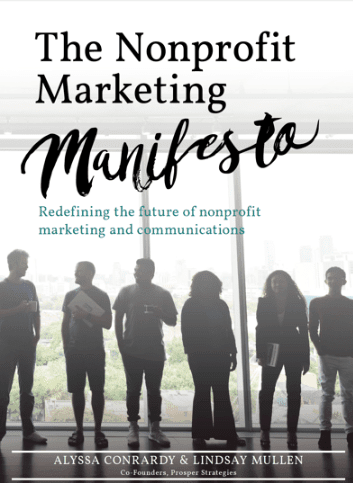More than 50 percent of nonprofits receive a majority of their donations during the last quarter of the year. As you think about your end-of-year fundraising efforts, it can be easy to fall into the trap of creating messaging and fundraising campaigns that put your donors at the center. Too many end-of-year materials emphasize how it’s the donors’ generosity that has helped change lives. Often, this messaging is supported by stories and imagery of individuals looking downtrodden in an attempt to personalize who donations “could help.”
This type of messaging and imagery was popularized in the early ‘80s by organizations like Oxfam and Feed the Children, and is also known as “poverty porn,” “stereotype porn” or “inspiration porn.” It is fairly commonplace in the social sector. However, it disempowers the very people your nonprofit exists to lift up, ultimately undermining your mission.
What is poverty porn or stereotype porn?
Poverty porn refers to the practice of portraying graphic imagery of those in need — individuals who look sick, poor, hungry, etc. — and encouraging donors to give to change those peoples’ conditions and lives. Poverty porn exists because, when it comes to raising money, it works. But at what cost to our missions?
In Commitment 9 of Prosper Strategies’ Nonprofit Marketing Manifesto, we address the topic of poverty or stereotype porn.
“We will avoid, at all costs, sacrificing the dignity of those we serve for the sake of our marketing and communications goals.”
How can we avoid poverty or stereotype porn in our marketing and fundraising materials?
Is there was a way to pull on your donors’ heartstrings without negatively impacting the people you serve? Is it possible to do this while empowering and uplifting them instead? You can.
Avoid poverty porn by using strengths-based messaging and asset framing
Flip the switch from donor-centric messaging to messaging that focuses on the benefit of your work for all. This practice is also known as asset framing, where your messaging frames individuals as assets to their communities. So instead of writing something like, “you [donor] made this possible,” frame the conversation around the community benefit by writing some like, “When we work together to ensure everyone has the support they need to maximize their potential, our communities are stronger.”
And, if you’re putting those you serve at the center of your story, you need to adopt the practice of strengths-based messaging, where you avoid defining people by their circumstances. For example, instead of referring to someone as a “homeless person,” you would write “a person experiencing homelessness,” or rather than writing “at-risk youth,” you’d write “youth in at-risk situations.”
Making these shifts in your messaging will take you a long way in terms of communicating your work to donors without disempowering the people you exist to serve.
Avoid poverty porn by engaging your stakeholders in developing their stories
More important than what and how you’re writing about your work and the people you serve is involving your clients in telling their own stories. The best way to evolve from donor-centric messaging — while still pulling on your donors’ heartstrings — is by using storytelling to highlight your impact and connecting that impact back to the broader community benefit. Here are some steps you can take to do this the right way:
- Get a feel for who is comfortable sharing their story
[spacer height=”5px” id=”3″] - Work with program staff to create a comfortable environment for story-gathering
[spacer height=”5px” id=”3″] - If you don’t already know the person willing to share their story, spend time with them before conducting any formal information gathering
[spacer height=”5px” id=”3″] - Let the person tell their own story and avoid leading questions or embellishment
[spacer height=”5px” id=”3″] - Share a write-up of the conversation with the person to ensure accuracy
[spacer height=”5px” id=”3″] - Once their story is integrated into any marketing or campaign materials, share it with them so they can see everything in context
[spacer height=”5px” id=”3″] - Don’t let anything go out the door without final approval from the person you are featuring
While yes, this process is straightforward, it ensures that what is being put out in the world is accurate and that the person who it reflects feels comfortable and hopefully empowered by sharing their story.
All of this is to say, when thinking about marketing and fundraising, take the long-range view and remember to put your mission before your marketing.
The Nonprofit Marketing Manifesto
For far too long, the nonprofit sector has thought far too small when it comes to marketing. Read the Nonprofit Marketing Manifesto to change your perspective on how marketing for nonprofits can — and should — have an even bigger impact.

